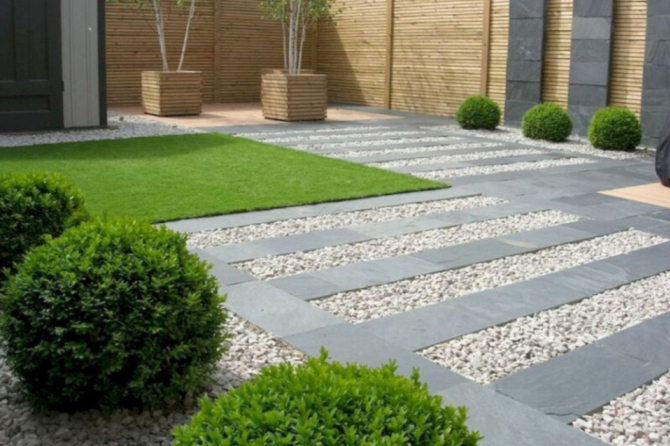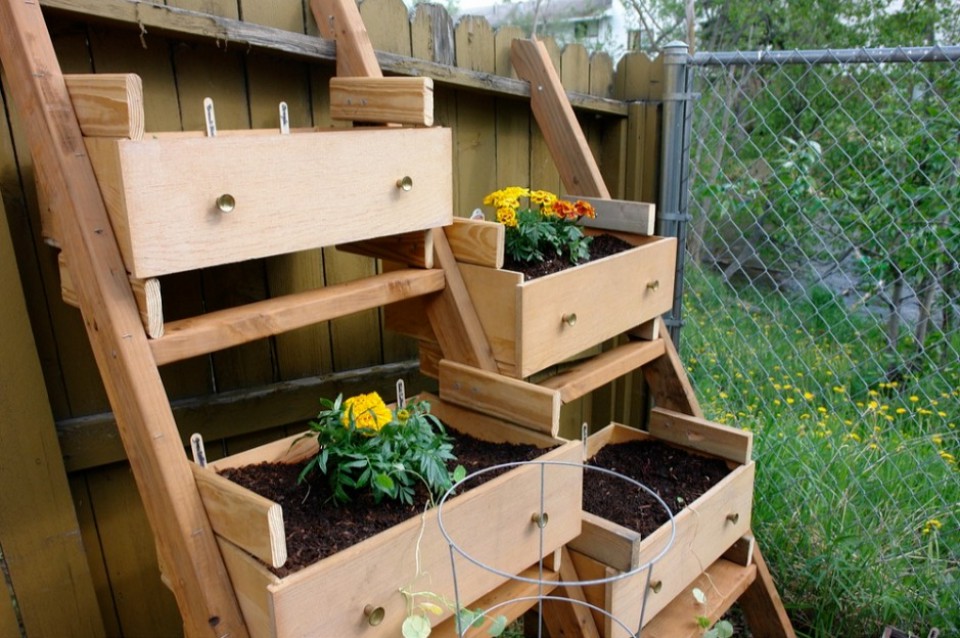Building a Vertical Garden Inside the Home: A Green Solution for Limited Space

Introduction
In the midst of the hustle and bustle of urban life, we often feel disconnected from nature which pampers the eyes and refreshes the mind. Green open spaces are increasingly rare, replaced by concrete and asphalt that dominate the urban landscape. Nevertheless, the human desire to connect with nature remains burning, driving us to look for creative ways to bring green elements into everyday life. This is why vertical gardens have become increasingly popular as an innovative and aesthetic solution to overcome the limitations of open space within city homes. In circumstances where space for a garden may be a luxury, vertical gardens offer an attractive alternative. By utilizing walls or other vertical spaces, we can create charming green beauty in our own home. This article aims to guide you through the process of designing and building a vertical garden that is both beautiful and functional, allowing you to enjoy the beauty of nature without having to leave the comfort of your home.
If you feel enchanted by the refreshing charm of nature and want to bring a little green magic into your limited space, then you have come to the right place. Let's explore the practical steps in creating a vertical garden that not only adds visual beauty, but also provides valuable environmental and health benefits for you and your family.
1. Vertical Garden Design Planning

Before you enter the stage of building a vertical garden in your house, a very important first step is to carry out careful design planning. This planning process involves careful consideration of various factors, including the size of the space available in your house, existing lighting conditions, air circulation around the target area, and the special needs of the plants you will plant. By considering each of these factors, you can ensure that the vertical garden you build will be appropriate in scope and meet the needs of the plants you choose.

In addition, choosing a location that receives adequate light exposure for the plants and ensures easy access for vertical garden care and maintenance is a crucial step in planning a successful design. By designing carefully from the start, you will be able to bring your vertical garden concept to reality with satisfying and sustainable results.
2. Selection of Structure and Materials

After planning the vertical garden design, the next step which is no less important is choosing the right structure and materials to support your vertical garden. You have a variety of choices, from warm and natural wood shelves to modern and durable metal shelves. In addition, there are also special vertical garden panels commercially available, which are specifically designed to support plants vertically. When choosing a structure, consider not only strength and durability, but also aesthetics and suitability to the interior design of your room. Choose a structure that suits your decorating style and adds beautiful visual value to your space.

Apart from structure, material selection also plays an important role in the success of your vertical garden. Make sure to choose materials that are resistant to humidity and environmental conditions in your home. Materials that are resistant to corrosion and do not rot easily are a good choice to ensure the sustainability of your vertical garden for a long time. Apart from that, also make sure that the material you choose is environmentally friendly and safe for use in the household environment. By choosing the right structure and materials, you will be able to build a strong, long-lasting and aesthetically pleasing vertical garden inside your home.
3. Aesthetic Design and Functionality

When you design a vertical garden inside your home, it is important to pay attention to both functional and aesthetic aspects. In addition to ensuring that your vertical garden functions well in supporting plant growth, you also want to create a visually stunning display. To achieve this, choose plants that not only match your room's decoration style, but also suit the environmental conditions in the house. For example, if your room has limited lighting, choose plants that are more shade tolerant or ornamental plants that require little light. Additionally, arrange the plants carefully to create an attractive display. You can mix different types of plants with different textures and colors to create a dynamic and impressive vertical garden.
Apart from plants, also consider other decorative elements that can add aesthetic value to your vertical garden. For example, add decorative elements such as attractive flower pots or aesthetic wall frames to highlight the beauty of your vertical garden. You may also consider additional lighting or wall decorations to create a more dramatic and interesting atmosphere. By designing your vertical garden with both functionality and aesthetics in mind, you will be able to create a living work of art that will beautify your space and provide natural freshness in your home.
4. Integration with Home Interior

When you integrate a vertical garden into your home interior design, the main goal is to create a harmonious balance between the natural beauty and decorative elements of your room. Choose a strategic location indoors that can maximize the presence of a vertical garden. For example, you can place it on the main wall of the living room or in an area that is frequently seen by visitors, so that the vertical garden becomes the main focus in the room. Additionally, consider additional elements such as additional lighting that can provide a dramatic highlight to your vertical garden. Wisely installed lighting can highlight the beauty of plants and add a pleasant touch to your space.

Apart from additional lighting, you can also consider other decorative elements to strengthen the integration of your vertical garden with your home's interior design. For example, add decorative elements such as mirrors or paintings around a vertical garden to create an interesting backdrop. You can also choose flower pots or containers that match your room's decorating style, so that the vertical garden looks like an organic and integrated part of the interior design. By carefully designing each element, you will create a space that flows harmoniously and offers a stunning visual experience for anyone who visits your home.
Lastly, don't forget to consider the convenience and functionality of a vertical garden in integration with your home interior. Ensure that its presence does not interfere with movement or use of the room, and that accessibility for care and maintenance remains easy. By ensuring all these aspects, you will create a vertical garden that is not only aesthetically beautiful, but also practical and functional as an integral part of your living space.
Closing
Vertical gardens are an innovative and aesthetic solution to overcome the limitations of open space in urban homes. By planning the design carefully, choosing the right structure and materials, and harmoniously integrating vertical gardens into your home interior design, you can create a stunning green oasis amidst the hustle and bustle of urban life. In addition to providing visual beauty, vertical gardens also provide valuable environmental and health benefits for you and your family. Let's together maintain the natural beauty in our homes and continue to inspire the people around us to create a balanced space between urban life and natural beauty. This way, we can continue to enjoy the wonders of green within our limited space, making our home a place full of life and peace.








